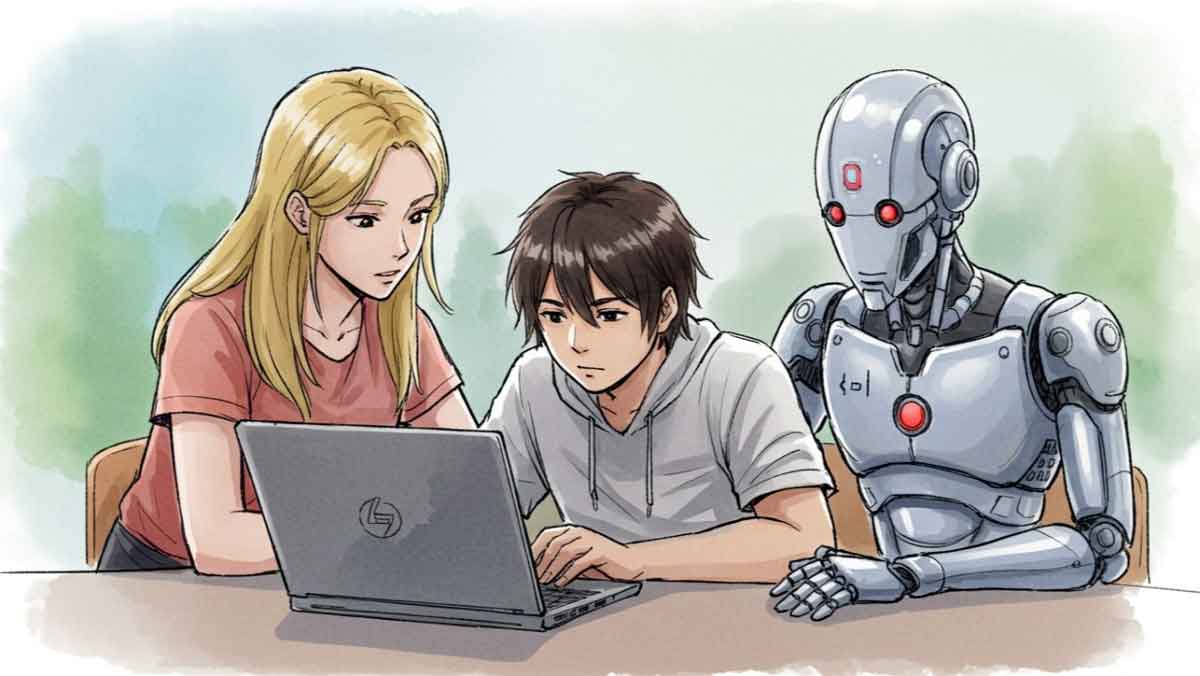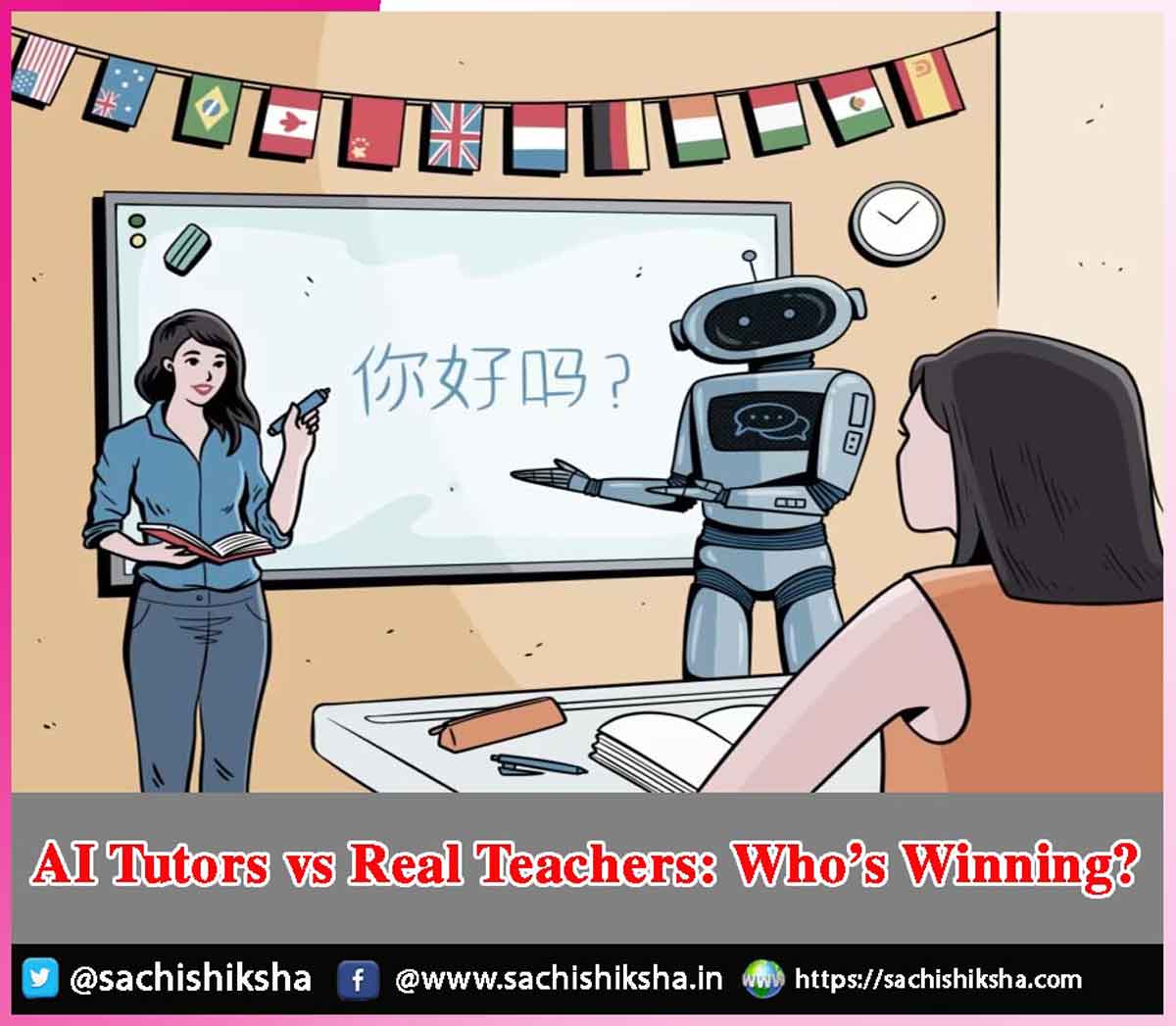AI Tutors vs Real Teachers: Who’s Winning?
Introduction: The rise of artificial intelligence has transformed almost every industry, and education is no exception. With AI tutors entering the scene, we are witnessing a fundamental shift in how knowledge is delivered, processed, and assessed.
But the question arises: who’s winning—AI tutors or real teachers? The answer isn’t simple, as both bring unique strengths to the table and face their own limitations. This essay explores the impact, effectiveness, and future trajectory of AI tutors in comparison to traditional human educators.
Table of Contents
The Emergence of AI in Education

Unlike traditional digital learning platforms, AI tutors learn and improve over time. They can assess a student’s weak areas and personalize the curriculum accordingly. They also offer 24/7 availability, which is an attractive feature for self-learners and remote students.
Advantages of AI Tutors
-
Personalization at Scale
AI tutors can analyze vast amounts of data from students’ interactions and adapt their teaching methods accordingly. For example, a student struggling with algebra will receive targeted practice problems and explanations until mastery is achieved. Traditional classrooms, especially those with large student numbers, struggle to provide this level of individual attention.
-
Accessibility and Affordability
AI-based learning is often more affordable and accessible than private tutoring or schooling. Students in remote areas with limited access to quality teachers can benefit immensely. AI tutors can operate across languages, time zones, and socioeconomic boundaries, reducing educational inequality.
-
Instant Feedback and Availability
Students don’t have to wait hours or days for feedback. AI can immediately correct an answer, explain the mistake, and provide alternate methods to solve the same problem. This instant feedback loop enhances the learning experience and helps retain knowledge.
-
Efficiency and Consistency
AI doesn’t suffer from fatigue, mood swings, or personal biases. It provides consistent feedback and teaching styles, ensuring that each student receives the same quality of education every time they log in.
Limitations of AI Tutors
Despite their growing popularity, AI tutors are not without flaws.
-
Lack of Emotional Intelligence
One of the biggest drawbacks of AI tutors is their inability to truly understand emotions, motivation, and mental health challenges. A student suffering from anxiety, fear of failure, or personal issues may not find solace or understanding in a machine’s response.
Real teachers do more than instruct—they mentor, inspire, encourage, and sometimes intervene in students’ lives. This human touch is critical, especially in early education and for students facing socio-emotional challenges.
-
Creativity and Critical Thinking
AI can mimic answers and provide formulaic responses, but it often lacks the nuance to foster creativity or open-ended critical thinking. Teachers use class discussions, debates, and experiential learning to nurture these skills, which are essential for real-world success.
-
Ethics and Bias
AI systems are trained on large datasets that may include biased content. If not carefully monitored, AI tutors could propagate stereotypes or incorrect information. Teachers, on the other hand, can question sources, challenge narratives, and promote critical awareness.
Strengths of Real Teachers
-
Human Connection and Empathy
Teachers form bonds with students. They observe body language, tone, and mood. They know when a student is zoning out or struggling silently. This emotional intelligence helps in tailoring the teaching approach beyond what an AI can detect.
-
Classroom Management and Social Skills
Schools are more than academic spaces; they are social environments. Teachers help students learn teamwork, leadership, discipline, and communication—skills difficult to replicate in an AI-led model.
-
Real-Time Adaptability
Teachers adjust lesson plans on the fly. If a class doesn’t understand a topic, a teacher might slow down, use a real-life analogy, or change teaching methods. AI can only adapt based on data and pre-programmed thresholds.
Blended Learning: The Middle Path
Instead of pitting AI against human teachers, many educators advocate for blended learning—a model where both coexist.
In such classrooms, AI handles the repetitive, time-consuming tasks like grading or providing personalized drills, freeing teachers to focus on mentorship, creativity, and motivation. This symbiotic approach brings out the best of both worlds.
For instance, a high school teacher might use AI to assign math problems based on individual student progress, but use class time to host discussions or collaborative projects. Similarly, language teachers might use AI grammar checkers but lead poetry workshops in person.
Who’s Winning? It Depends
-
In Technical Subjects: AI is Catching Up
In fields like math, coding, and grammar—where answers are right or wrong—AI is proving to be very effective. For students who need help with specific problem sets or exam preparation, AI tutors are already competing with and, in some cases, outperforming human tutors.
-
In Emotional and Creative Subjects: Teachers Still Lead
Subjects like literature, philosophy, psychology, and the arts require interpretation, emotional insight, and dialogue. Here, real teachers remain essential.
-
In Scale and Reach: AI Has the Edge
AI can reach millions in seconds, with consistent quality and minimal cost. For large-scale basic education or skill development in underdeveloped regions, AI holds unmatched promise.
Challenges Moving Forward
- Digital Divide : Despite AI’s potential, access to devices and the internet remains a barrier. In many rural or low-income areas, students still rely entirely on human teachers.
- Data Privacy: AI tutors collect large volumes of user data. Ensuring this data is secure and not exploited is crucial to ethical AI education.
- Teacher Resistance: Some teachers view AI as a threat. Professional development and training are needed to help educators embrace AI as a tool, not a rival.
The Future: Complement, Not Replace
AI is not here to replace teachers, but to redefine their role. In the future, teachers may function more as learning facilitators, mentors, and emotional guides, while AI handles personalization, feedback, and curriculum reinforcement.
The real win will come when education systems balance the efficiency of machines with the empathy of humans.
Conclusion : So, who’s winning in the AI tutors vs real teachers debate? The answer is: neither, and both.
AI is winning in efficiency, accessibility, and scale. Real teachers are winning in empathy, creativity, and holistic education. But education is not a zero-sum game. It’s about what’s best for the student. And when AI and teachers work together, the student is the real winner.















































